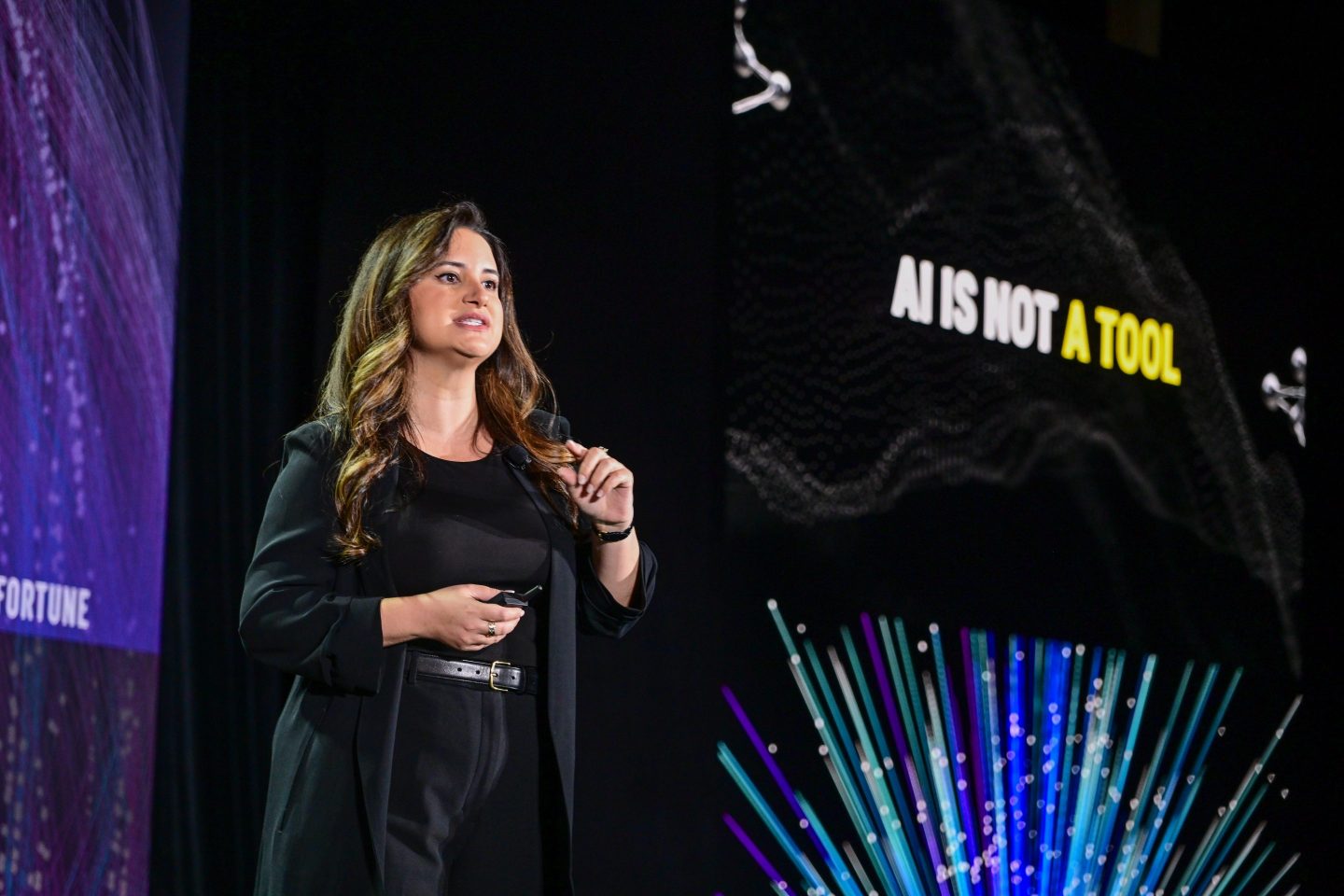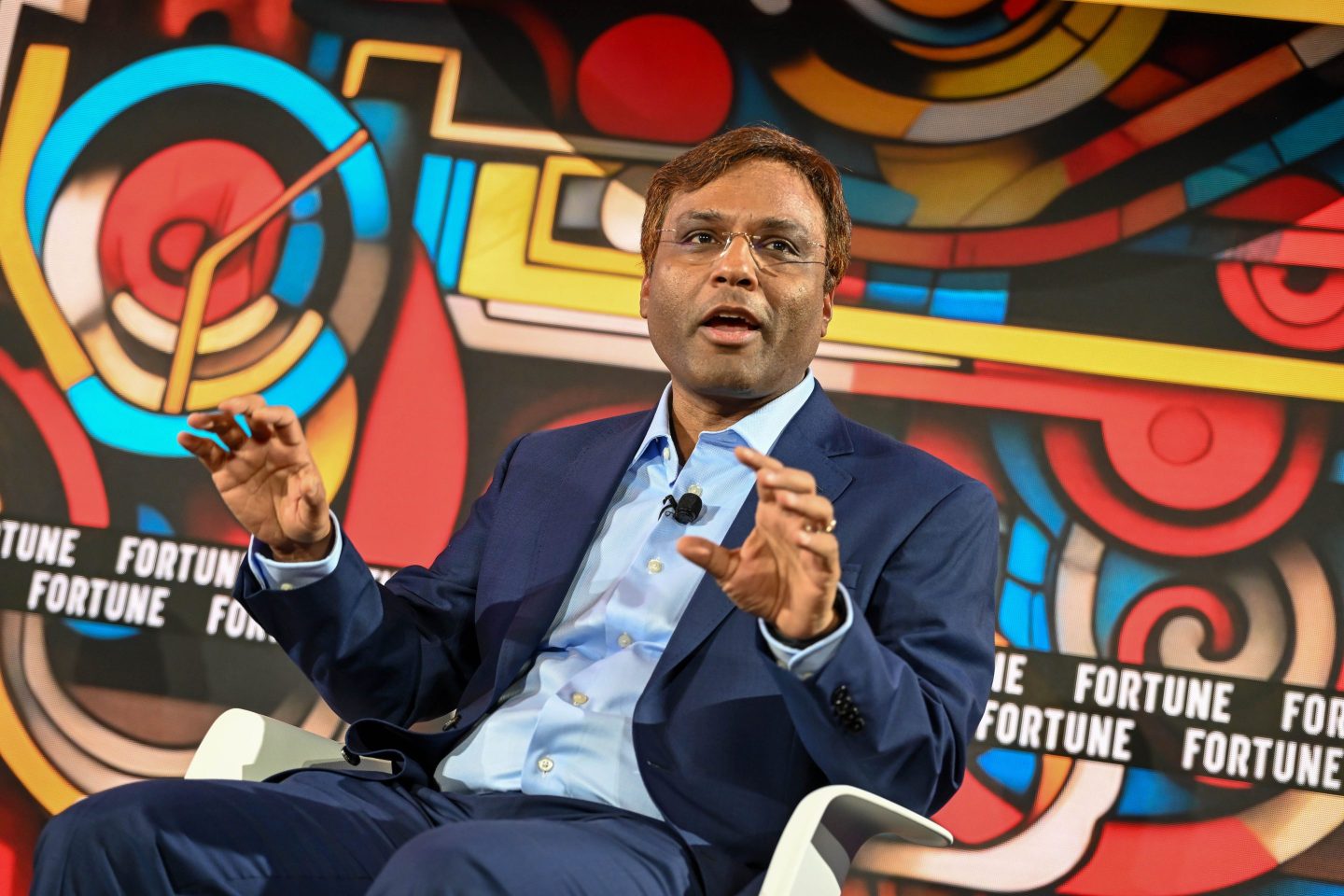Good morning, Data Sheet readers. Facebook is making it simpler for publishers to profit from viewership of their articles via the social network. Researchers are warning of a “venomous” security flaw that could threaten cloud data centers. Plus, Google and Apple are making plenty of renewable energy investments as a hedge against rising electricity costs. Fortune senior writer Katie Fehrenbacher reports on what’s complicating their strategies.
If you find this newsletter useful, share this link for today’s edition and encourage your colleagues to subscribe. Thanks for spreading the word!
TOP OF MIND
What Verizon’s $4.4 billion takeover of AOL is really about. The two companies list lots of reasons for the deal. They include the pretty obvious: all the content AOL owns, including Huffington Post, TechCrunch and Engadget (although these properties could be for sale); and the somewhat less obvious thesis that it’s an Internet of things play. But AOL’s fastest growing business is selling ads for third-party sites. The digital media company has pretty sophisticated analytics for this. For Fortune’s complete analysis, visit this link.
TRENDING
Facebook’s new business model for publishers is officially live. The Instant Articles service helps stories load faster on the social network. From a business standpoint, it lets media companies embed advertising that can be tracked via comScore and other analytics methods. So far, nine companies are on board, including the New York Times, BuzzFeed and National Geographic.
New security bug threatens virtual machines, a key component of cloud services. The flaw found by researchers at CrowdStrike has been dubbed Venom, which stands for “virtualized environment neglected operations manipulation.” Here’s the problem. “With Venom, you’re able to break out of a virtual machine on a system and get access to other data on that system’s network,” researcher Jason Geffner told Fortune.
North America is running out of Internet addresses. The situation could be especially problematic for cloud service providers, reports The Wall Street Journal. That’s why Microsoft, Amazon and Salesforce are buying up the current supply of IPv4 addresses quickly. (There are 4.3 billion total.) The good news for those who miss out: Next-generation networking gear will give businesses access to 340 undecillion (that’s 36 zeroes) new addresses that support IPv6.
GoDaddy lost money during its first quarter as a public company. Its loss of $43.3 million wasn’t expected, but CEO Blake Irving has already moved to address it with cuts to its marketing budget. “Eventually that’ll disappear,” he told Fortune in a brief interview after the financial results were issued. One thing that will go: its longstanding sponsorship of race car drive Danica Patrick.
Sure, messaging apps make sense as a customer service channel. One service, Tango, is also testing e-commerce applications. Its 300 million registered users can now buy more than 2 million products from Walmart and Alibaba.
THE DOWNLOAD
The biggest barrier to Apple and Google's clean power plans: Utilities
Tech companies that want to use clean energy in their data centers face obstacles from utilities, particularly in states where coal is king. Fortune senior writer Katie Fehrenbacher reports on how they’re finding workarounds.
Despite news about Google and Apple investing in clean energy to power their huge data centers, Internet companies' renewable energy efforts are being held back by slow-moving, monopolistic utilities and sclerotic state policies, according to a report by Greenpeace released Tuesday.
Utilities in regions that have large coal industries—like Duke Energy in North Carolina and Dominion Resources in Virginia—are the biggest obstacles to tech companies buying more clean power from the local grid, the report said.
A year and a half ago, some of these fossil-fuel-heavy utilities seemed to be making major progress in offering Internet companies (and industrial customers) the chance to buy clean power. Duke Energy in North Carolina introduced a first-of-its-kind experimental program to do just that. The state's utility commission approved the plan just a short time later.
But according to Greenpeace's report, Duke Energy's green energy program hasn't gained any traction. Customers have balked at paying the extra costs, or "administrative fees," charged by the utility. The surcharge goes beyond the cost to the utility for the necessary clean power infrastructure.
Duke Energy tacks on an additional two cents per kilowatt-hour for its green energy program, according to the report, which could add up to millions of dollars annually for a big customer. Google, Facebook, Apple and others have massive data centers in North Carolina and helped to push Duke Energy into initially creating its clean energy program.
Likewise, Dominion recently started testing a clean energy program. But Greenpeace noted that it, too, has no customers because of the higher cost and limited amount of clean energy available. For example, one large data center can use more clean electricity than Dominion has available. Amazon, which Greenpeace has consistently lambasted for its lack of transparency about its clean energy programs, has a number of data centers in Dominion territory.
While the Internet companies seemed willing to pay some premium years ago, the price of solar and wind has dropped dramatically over the past two years. As a result, clean energy contracts can be competitive or sometimes even cheaper than fossil fuel power in certain regions.
Apple's CEO Tim Cook and Vice President of Environmental Initiatives Lisa Jackson have said that their company's investment in a California solar farm will likely provide Apple with significant savings over 25 years. The company is locked into a low solar energy rate in the face of rising grid electricity prices.
Other utilities are having better success finding data center customers for their clean energy purchasing programs, Greenpeace noted. Programs in at least 10 states let customers like Apple buy clean energy. While Arizona utility Arizona Public Service has put a premium on electricity from its clean energy program, the extra cost is still low enough that it signed up data center customer IO.
Google, perhaps, has the most to lose with the roadblocks from utility companies. Because it generally wants to avoid building and owning its own clean energy projects, Google has limited flexibility in where it gets its electricity. Apple, on the other hand, has aggressively worked with solar companies to build its own solar projects, sometimes bypassing the utility for almost everything other than the grid connection. Apple indirectly initiated perhaps the biggest pressure on Duke Energy to launch its green power plan in North Carolina after Apple built three huge solar farms and a fuel cell farm there.
Read the rest of Katie’s article about how tech companies with substantial data center assets are challenging utilities. Share this direct link to her story: http://fortune.com/2015/05/12/apple-google-clean-power/
ALSO WORTH SHARING
YouTube mourns key engineer. Venkat Panchapakesan, a Google vice president who reported to the video service’s CEO Susan Wojicki, was fighting cancer.
Salesforce just signed up a big international partner. Sage, the third biggest software company in Europe, sells accounting, payroll, and other financial management applications to small businesses.
Teradata is working with Facebook, too. Remember that marketing analytics mashup that IBM trumpeted last week? The big datawarehouse software company has announced a similar social advertising partnership.
Samsung is pushing new chips and circuit boards for enabling the Internet of things. But it faces some pretty rivals, Intel and Qualcomm.
Bigcommerce moves upmarket. The e-commerce software company, which traditionally works with small and midsize brands, is signing up high-volume brands including Marvel, Schwinn and Enfamil.
Guess what contract manufacturer just invested in Cyanogen, the startup behind an open version of the Android OS? Long-time Apple partner Foxconn.
Looking for more customers? Nutanix, the data center startup valued around $2 billion, is giving away a free version of its software. It’s meant for researchers, students, and potential buyers.
$2 trillion, the estimated global cost of data breaches over the next five years.
Smartphones are now the third most popular consumer electronics gadget in U.S. households, behind televisions and DVD players.
Google just released its first Apple Watch app, a weather and news service.
Verizon and Sprint are the latest carriers to pay up for allowing unauthorized mobile phone charges. The settlements are $90 million and $68 million, respectively.
How two recently public software companies did in their latest quarter. Hortonworks, the Hadoop company that went public last December, is boosting its forecast after beating revenue expectations. But its losses almost doubled. New Relic, which makes application monitoring technology, also beat the Street in sales.
Speedier cloud services. Instart Logic, which sells application acceleration technology, has raised another $43 million. That brings its total to $95 million. The lead investors are Four Rivers Group and Hermes Growth Partners.
Archiving software startup Actiance, which keeps tabs on social media and messaging content, has closed a late-stage, $28 million financing round.
MY FORTUNE BOOKMARKS
Tyra Banks and other invest in millennial career site The Muse by Erin Griffith
Facebook hires former FCC chair to add regulatory muscle by Tom Huddleston, Jr.
Intel celebrates Moore’s Law … with Gordon Moore by Adam Lashinsky
Square raises more money to make small business loans by Leena Rao
GE’s first 3D-printed parts take flight by Andrew Zaleski
Class is in session—with Dustin Hoffman and Serena Williams by Kia Kokalitcheva
Who wins and who loses if Apple disrupts TV by Philip Elmer-DeWitt
ONE MORE THING
What Bill Gates, Andy Grove and Steve Jobs had in common. They understood the value of position technologies as platforms that could be improved by others. A new book, Strategy Rules, lays it out. Why it’s interesting: one of the professors who wrote it used to be an Intel board member, and the research benefitted from interviews with Grove and other former Apple, Intel and Microsoft execs.
MARK YOUR CALENDAR
Annual Global Technology, Media and Telecom Conference: JP Morgan’s 43rd invite-only event. (May 18 - 20; Boston)
MuleSoft Connect: Tie together apps, data and devices. (May 27 - 29; San Francisco)
MongoDB World: Scale the universe. (June 1 - 2; New York)
HP Discover: Trends and technologies. (June 2 - 4; Las Vegas)
Apple Worldwide Developers Conference: Future of iOS and OS X. (June 8 - 12; San Francisco)
Hadoop Summit San Jose: Mainstreaming adoption. (June 9 - 11; San Jose, California)
Red Hat Summit: Energize your enterprise. (June 23 - 26; Boston)
Brainstorm Tech: Fortune’s invite-only gathering of thinkers, influencers and entrepreneurs. (July 13 - 15; Aspen, Colorado)
VMworld: The virtualization ecosystem. (Aug. 30 – Sept. 3, 2015; San Francisco)
Cassandra Summit: Largest gathering of Cassandra database developers. (Sept. 22 - 24; San Francisco)
Workday Rising: Meet and share. (Sept. 28 - Oct. 1; Las Vegas)
HP Engage: Big data, big engagement. (Oct. 4 - 6; San Diego)
Gartner Symposium ITxpo: CIOs and senior IT executives. (Oct. 4 - 8; Orlando, Florida)
Oracle OpenWorld: Customer and partner conference. (Oct. 25 - 29; San Francisco)












